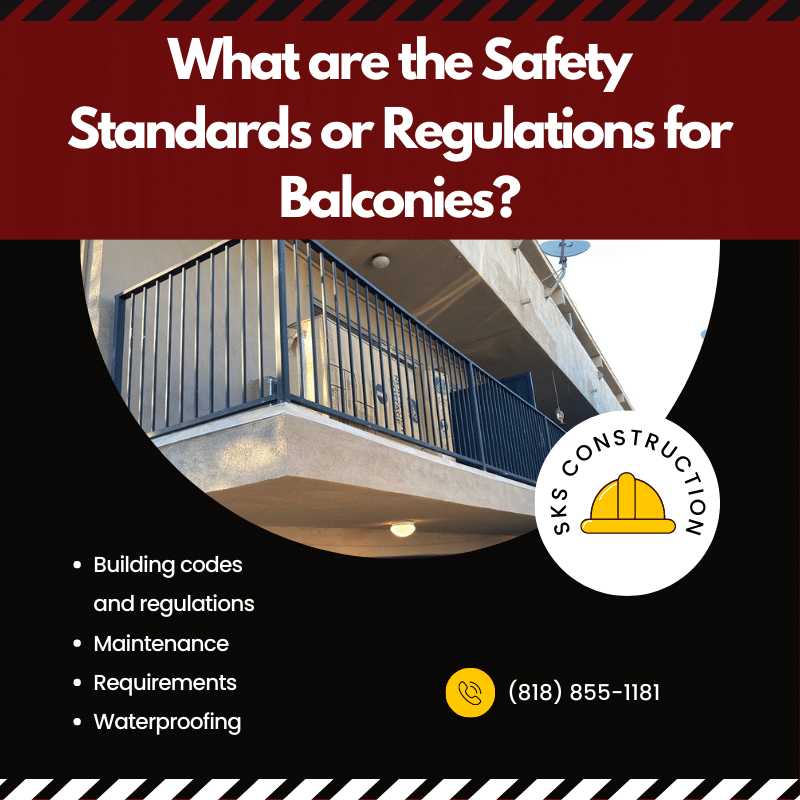
Are There Any Specific Safety Standards or Regulations for Balconies?
Balconies provide a space for outdoor activities and increase the value of the property. However, like any other part of a building, they require regular maintenance and inspection to ensure their safety and integrity. During balcony inspections, a number of common problems can be identified which need maintenance for the structural integrity and residents to be protected.
1. Building Codes and Regulations:
Balconies are subject to building codes and regulations enforced by local authorities. These codes outline the minimum requirements for design, construction, and safety features of balconies. The specifics may vary between regions, but they generally cover aspects such as load-bearing capacities, structural integrity, dimensions, and railing specifications. These regulations are put in place to ensure that balconies are built to withstand the anticipated loads and provide adequate protection for occupants.
2. Load-Bearing Capacities:
One essential safety consideration for balconies is their load-bearing capacity. The structure must be able to support the weight of people, furniture, and other potential loads. Building codes typically stipulate minimum weight limits that balconies should be designed to withstand. Factors such as materials used, support structures, and anchoring methods play a crucial role in determining the load-bearing capabilities. For older buildings, a balcony structural repair might be necessary to meet current standards.
3. Railing Requirements:
Balcony railings are essential for preventing falls and ensuring the safety of occupants. Regulations often specify the height, spacing, and strength of balcony railings. The height of the railing is typically determined to minimize the risk of people accidentally falling over the edge. Vertical balusters or spindles should be spaced closely enough to prevent small children from slipping through, while still allowing for unobstructed views. The strength of the railing must be sufficient to withstand a certain amount of force to prevent collapses or accidents.
4. Regular Inspections and Maintenance:
To ensure the ongoing safety of balconies, regular balcony inspections and balcony repairs are crucial. Building owners or homeowners are responsible for monitoring and maintaining their balconies in compliance with safety standards. Inspections may involve checking for signs of deterioration, damage, or structural issues, such as rotting wood, rusted metal, or weakened support beams. For properties in Los Angeles, a balcony inspection might be necessary, particularly to comply with SB 326 inspections. Prompt repairs and maintenance are necessary to address any identified issues before they escalate and compromise the safety of the balcony.
5. Waterproofing
Balconies are exposed to the elements, making weatherproofing and waterproofing essential considerations. Properly designed balconies should incorporate measures to prevent water infiltration, which can lead to deterioration and structural damage over time. This may involve installing waterproof membranes, appropriate flashing, and proper drainage systems to channel water away from the structure.
Balcony inspections are an important aspect of building maintenance. They help to identify potential safety hazards and allow for remedial action to be taken before accidents occur. By understanding the process of a balcony inspection and the reasons why it's important, building owners and occupants can help ensure that their balconies are safe and secure. If you have any concerns about the condition of your balcony contact us today for a free estimate!